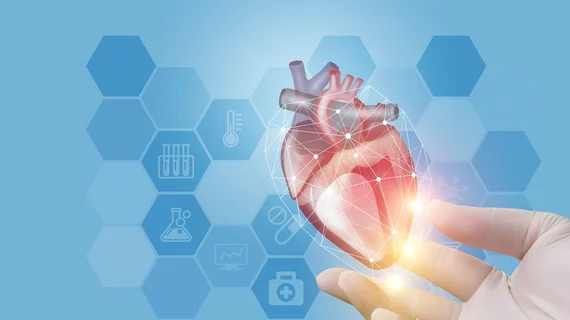Physicians are more likely to predict heart attack than stroke when analyzing CAC scans
A CT scan ordered to measure the plaque inside a patient’s heart arteries can better predict a heart attack rather than stroke, according to new research.
These results, published Tuesday in Circulation: Cardiovascular Imaging, were consistent in both men and women, and across multiple racial groups. UT Southwestern researchers said their discovery can help providers decide how aggressively they want to treat patients with certain risk factors, such as high cholesterol and blood pressure.
“In our study, there was a twofold greater risk of heart attack than stroke at coronary artery calcium levels at or above 100," which indicates moderate to high plaque levels, said senior author Parag Joshi, MD, a cardiologist and assistant professor of internal medicine at the Dallas institution. "That held true for Black, white, and Hispanic men and women."
To reach their conclusions, Joshi et al. analyzed data from more than 7,000 patients who took part in two major studies: the Multi-Ethnic Study of Atherosclerosis or MESA, funded by the National Institutes of Health, and the Dallas Heart Study at UT Southwestern.
Each participant was divided based on their calcium risk scores (zero, 1-99, and 100 or above) and further subdivided based on their sex and race.
For those with a CAC score of zero, heart attack or stroke risk was less than 2% over the next decade. That rose slightly to near 6% in patients ranging from 1-99.
When CAC metrics shot above 100, however, heart attack risk was twice as high as stroke for everyone in the study. For the former, men and Hispanic participants were particularly at risk, coming in at 12% and 14%, respectively. Women faced an 8% possibility of heart attack over the coming 10 year period.
Joshi and colleagues also noted that all groups maintained a stroke risk of under 8%, but women, Black and Hispanic individuals faced a slightly higher potential for adverse cardio outcomes than men and white patients.
Individuals are often wary of undertaking a life of drug therapy, and these results can help doctors and patients make a decision in cases that are not immediately clear according to patient-related factors.
"If you think your patient should be on a statin and your patient doesn't want to take it, this can be a good arbitrator of that," he added. "Our findings also highlight some of the nuance between heart attack risk and stroke risk and how our patients might consider those two risks in their decision making."

